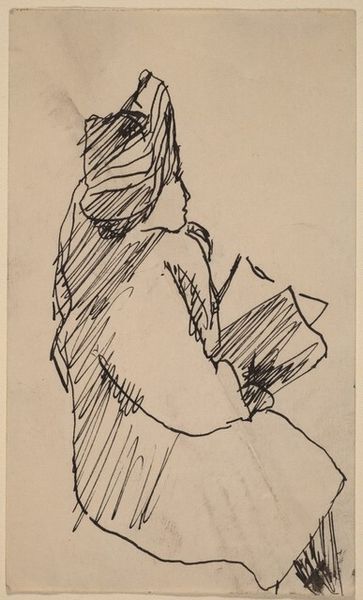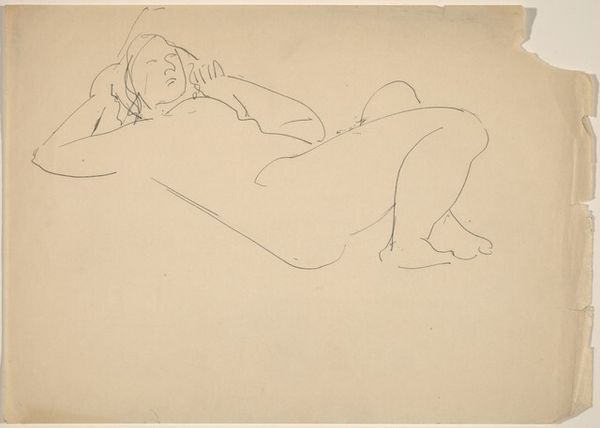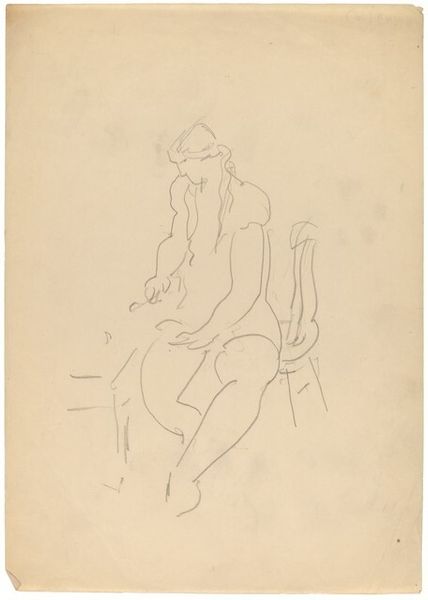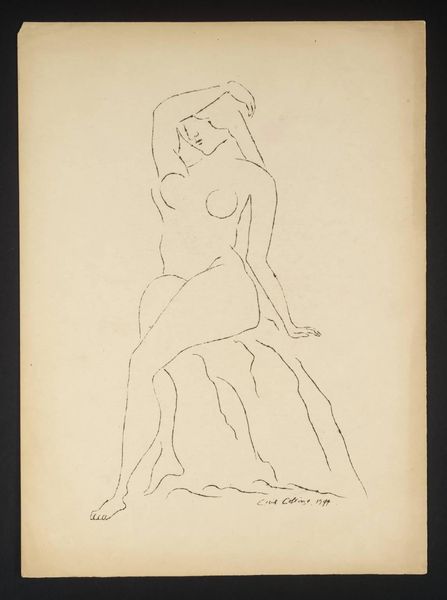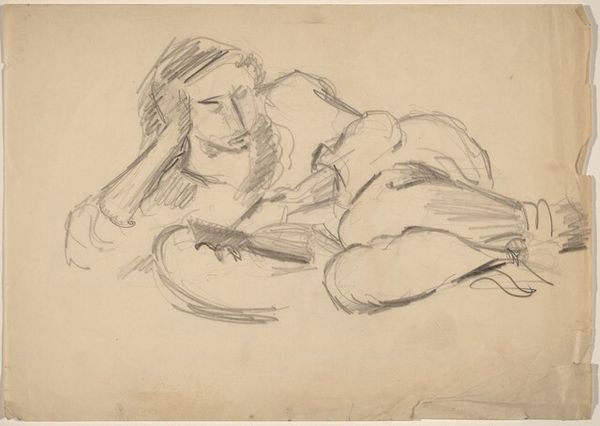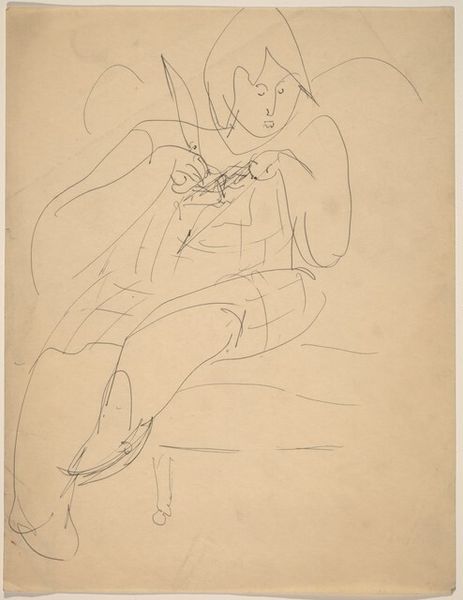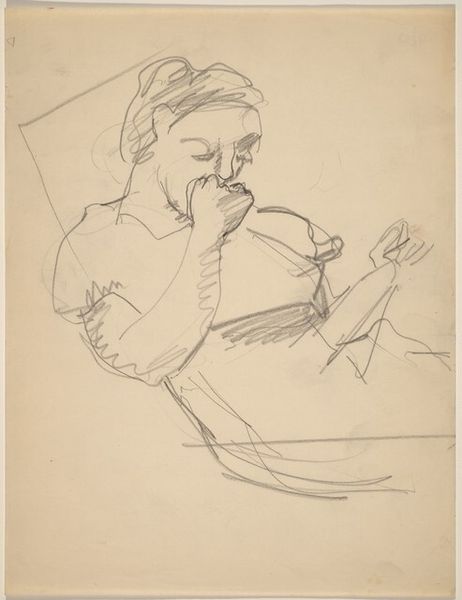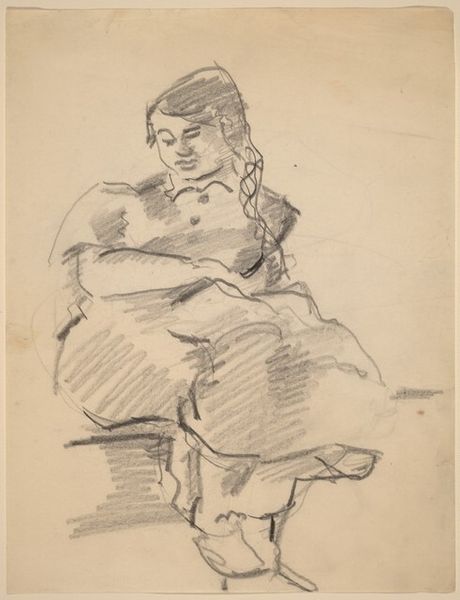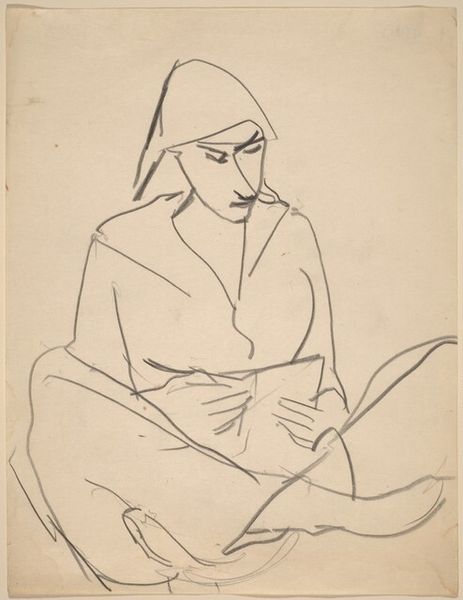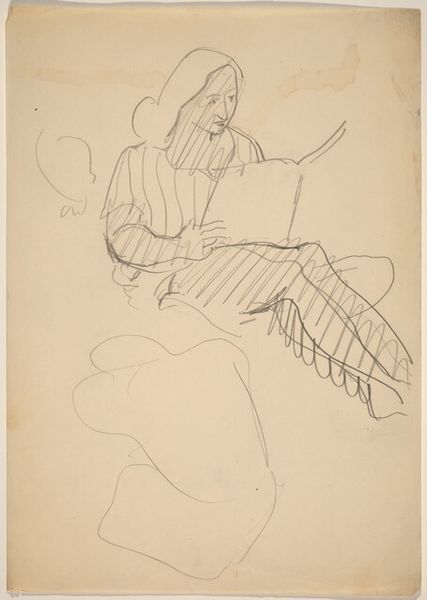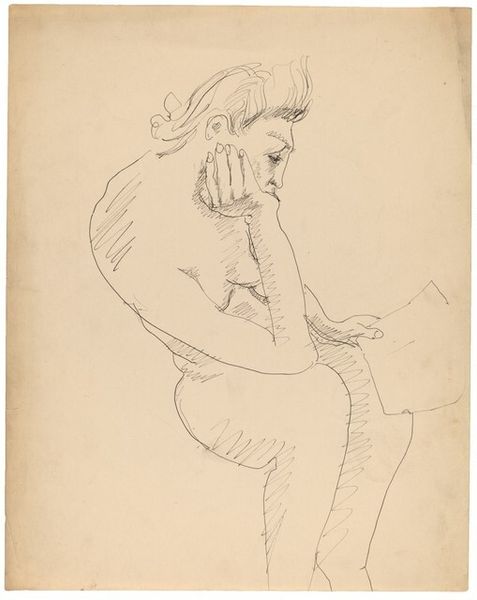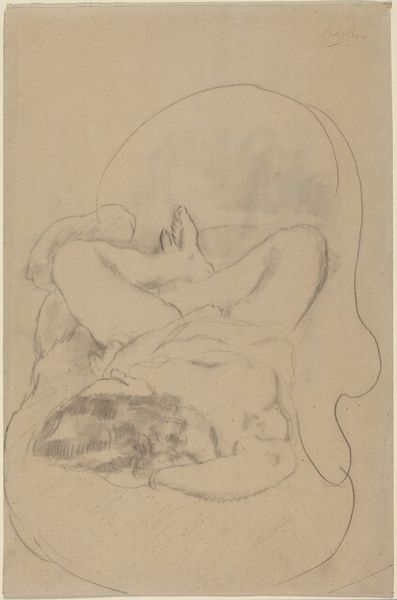
drawing
#
drawing
#
toned paper
#
light pencil work
#
ink drawing
#
pencil sketch
#
personal sketchbook
#
ink drawing experimentation
#
pen-ink sketch
#
sketchbook drawing
#
pencil work
#
watercolour illustration
Dimensions: overall: 27.7 x 21.5 cm (10 7/8 x 8 7/16 in.)
Copyright: National Gallery of Art: CC0 1.0
Editor: This is a pencil and ink drawing, "Woman Curled Up in Chair, Reading," by Mark Rothko. It feels like a very intimate, personal sketch – like a glimpse into a private moment. What do you see in this piece, and how does it connect to the broader context of Rothko's work, which is so famous for his color field paintings? Curator: I'm drawn to the inherent tension in viewing this work by Rothko. Here we see a figurative scene—a woman, actively engaging with text. How might we consider this relative to his later works and their embrace of abstraction, and the rejection of figuration in art? It asks us to reflect on how societal expectations can influence artistic expression and categorization. We could even delve into the socio-political forces shaping the art world at the time, and how Rothko both navigated and challenged them through his diverse artistic practice. What does the act of *reading* represent here, and for whom was such a private intellectual space typically afforded? Editor: So, it's almost like the drawing hints at a dialogue – or a struggle – between the personal and the political? Curator: Exactly! This piece can spark a crucial discussion about representation, power dynamics, and artistic freedom, especially concerning the gaze on women in art. By looking closely at "Woman Curled Up in Chair, Reading", and then thinking about the way in which Rothko may have found the act of drawing conducive to capturing intimate impressions, can we come to reconsider his broader practice, not as merely abstract formalism, but as quietly radical? How might this resonate with today's ongoing conversations about diversity and inclusivity in the art world? Editor: That makes me see it in a completely different light, it adds so much depth to something that initially seemed very simple. I'm starting to think about all the unseen forces influencing what artists create and what we, as viewers, are taught to see. Curator: Precisely. And the beauty of art history is in prompting these very questions. It challenges us to go beyond the surface and engage with the complex, interwoven narratives that shape our understanding of art and the world around us.
Comments
No comments
Be the first to comment and join the conversation on the ultimate creative platform.

